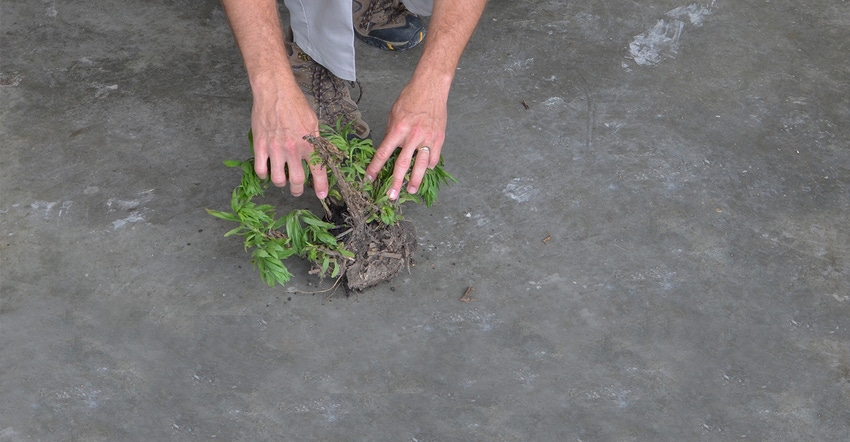
Jim Facemire stood in the soybean field with a good stand of young soybeans and looked around. He saw young bean plants and cornstalks left from last year. He no-tilled soybeans into cornstalks this spring. What he didn’t see were weeds. Facemire, Edinburgh, was especially glad not to see marestail, but he saw virtually no weeds at all.
He sprayed some of his acres two falls ago, and more acres last fall. If weather cooperates and he can make it work, he says he’ll spray all his acres in the fall this year. You may be battling marestail in soybeans or corn.
Facemire is not the only one noticing such results and expressing these sentiments. Jeff Nagel, an agronomist and certified crop adviser with Ceres Solutions, based in Lafayette, has seen very good results recently from fall applications. Here’s a seven-step process he believes can deliver improved weed control, especially if you’re battling marestail.
1. Plan your weed control program for 2018 this year. Do it soon enough that you can include a fall herbicide application if you think it’s warranted, Nagel says. Fall applications not only take care of winter annuals, but also give you a jump on marestail plants that emerge in the fall.
2. Make a fall application the backbone of the program. It’s a good first step to having clean fields to plant into the next spring, Nagel insists.
3. Don’t substitute vertical tillage for a fall herbicide application. “A vertical-tillage machine is not a weed control tool,” Nagel says. These implements have their place, but don’t count on them to solve your weed problems.
4. Make planting into a clean field next spring your goal. Planting into a clean field is critical if marestail is one of your problem weeds. Once it gets a foothold in the spring and bolts out of the rosette stage, it is a tough weed to control, Nagel says.
5. Expect to apply a burndown in the spring with a residual herbicide. Even if you applied the fall herbicide, you will likely need a spring burndown ahead of planting, Nagel says. Include a strong residual herbicide at the same time.
6. Be ready to make adjustments to the plan as the weather dictates. Just because you enter the season with a plan doesn’t mean you can’t change it, Nagel says. You need to adapt it to fit weather situations. This year proved to be a classic case, with rain in many areas delaying not only planting, but also the ability to spray burndowns ahead of planting, or spray fields that were already planted. If the residual herbicide was already applied when the rains came, it may have been stretched to its limit of control period by the time it dried out and crops took off again.
7. Spray small weeds! Many situations weren’t ideal this spring, Nagel acknowledges. That’s where you have to adapt to the conditions and make the best decisions possible for the conditions that you have. “We want to be spraying 4-inch marestail if we’re going postemergence, not 12- to 18-inch marestail,” he says. “No one should plan to spray weeds that big. Sometimes it can’t be avoided, but it’s certainly not ideal.”
About the Author(s)
You May Also Like




